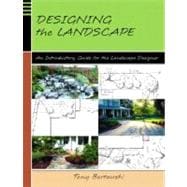
| Interview | |
| Finding work and interview clients | |
| Site Plan | |
| Taking measurements and drawing site plan | |
| Analysis | |
| Inventory and analysis of site | |
| Functional Principles | |
| Study of the useful, or functional, aspects of landscape | |
| Concept Plan | |
| Organizing the ground plane and developing a functional design | |
| Design Principles | |
| Study of the components of visual interest, balance, connection and flow | |
| Preliminary Design | |
| Landscape design based on concept plan using generic materials | |
| Plants and Hardscapes | |
| An in-depth look at plant selection and hardscape materials | |
| Master Plan | |
| Putting together the final plan that specifies all material in design | |
| Presentation | |
| An organized and effective approach to presenting design to client | |
| Design Process | |
| Summary of the design process | |
| Plant and Hardscapes Resources | |
| Books, software and internet links | |
| Estimation | |
| An introduction on estimating materials in the design | |
| Computer Automated Design | |
| Plan drawing and image design software | |
| Butterfly Gardening | |
| Designing to attract butterflies | |
| Repelling Deer | |
| Designing to help reduce damage from deer | |
| Xeriscaping | |
| Practice of using native plants to reduce management inputs | |
| Hardiness Map | |
| Heat Zone Map | |
| Table of Contents provided by Publisher. All Rights Reserved. |
The New copy of this book will include any supplemental materials advertised. Please check the title of the book to determine if it should include any access cards, study guides, lab manuals, CDs, etc.
The Used, Rental and eBook copies of this book are not guaranteed to include any supplemental materials. Typically, only the book itself is included. This is true even if the title states it includes any access cards, study guides, lab manuals, CDs, etc.